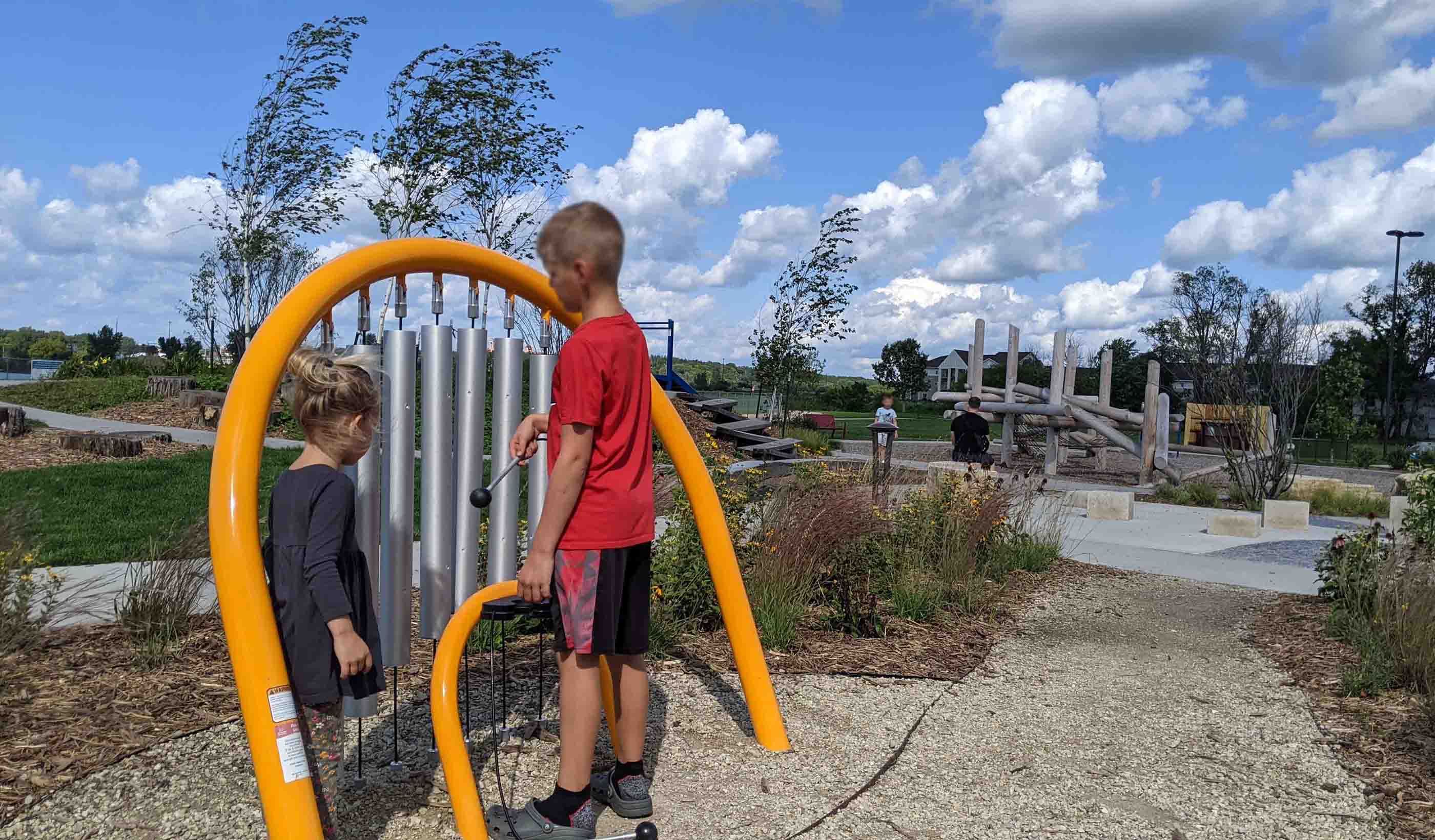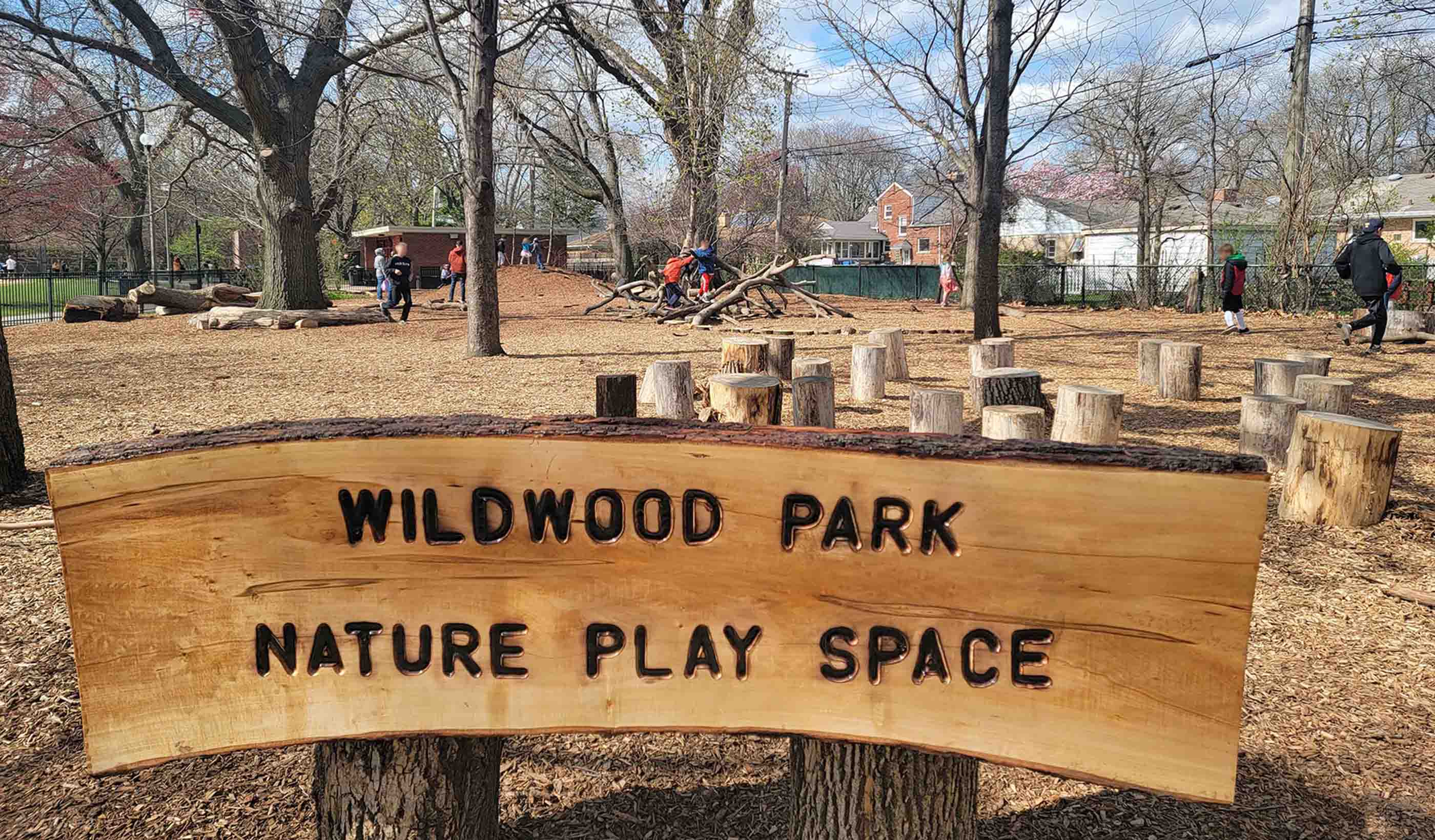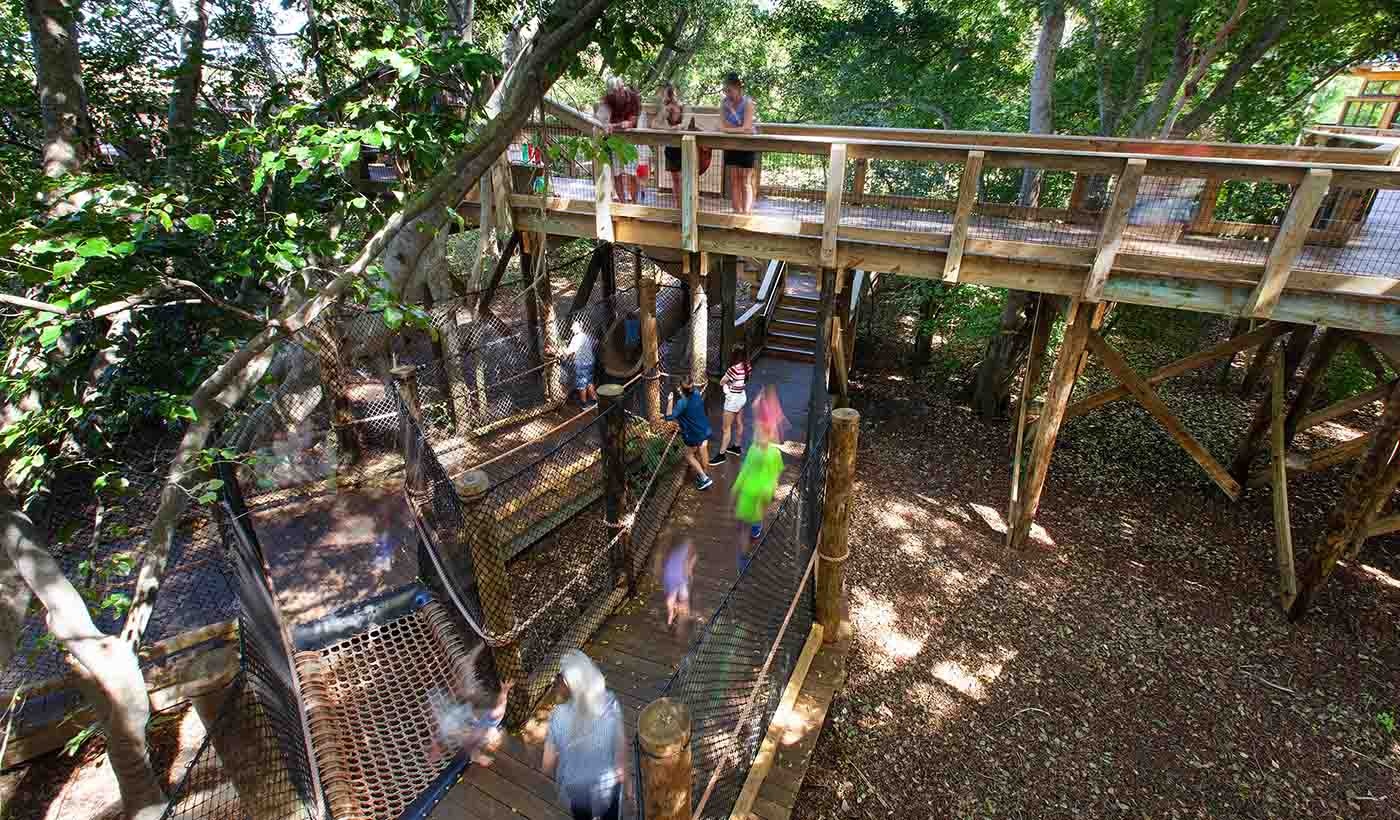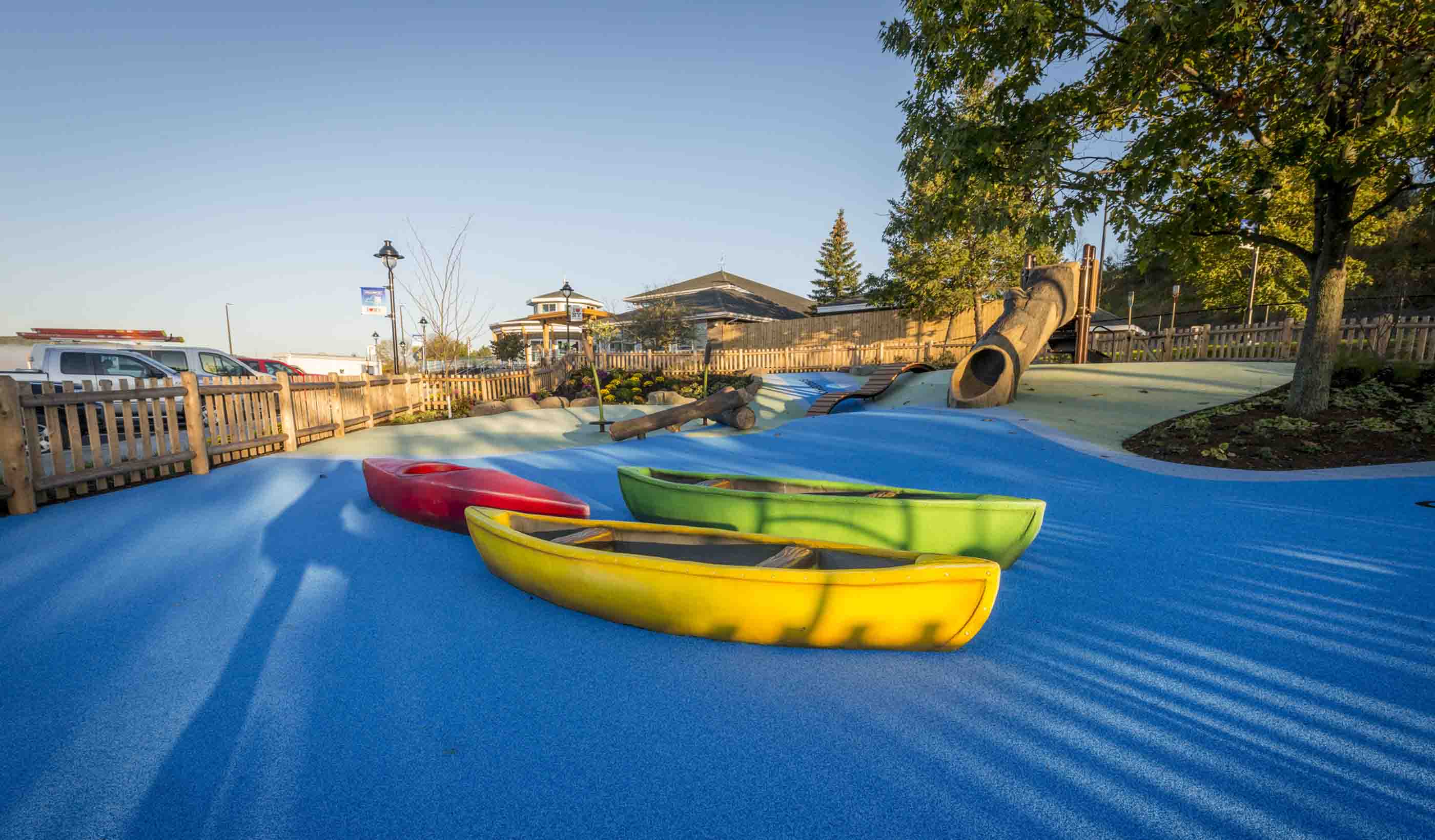For your next urban playground or revitalization, consider nature-based solutions
May 06, 2022
May 06, 2022
Known as engineering with nature, nature-based solutions can bring green solutions to urban areas, making for healthier options to getting outdoors
How can cities and towns address the rising rates of obesity, mental illness, and chronic disease in children? For many, it is adding a large dose of nature to their parks, playgrounds, vacant lots, and open spaces.
The idea of nature as a health benefit first emerged with the 2005 book, Last Child in the Woods, which coined the phrase “nature-deficient disorder.” The book sparked a global conversation about the need for children and families to get outdoors. Many communities responded by planning new parks, recreation trails, and nature play areas.
However, it has not been easy bringing the outdoors to urban families. Community leaders discovered inequities to getting kids and their families into nature. They found it isn’t just video games holding families back, it is also safety and transportation issues, a lack of access to natural areas, and inclusivity.

Located in Rochester, Minnesota, Cascade Lake playground invites children to explore its many nature play areas.
One way we can overcome inequities and get children and families greater access is by employing nature-based solutions (NbS). Sometimes referred to as engineering with nature, NbS uses natural systems, combined with traditional engineering, to solve landscape and infrastructure challenges.
There are many varied examples of NbS in action. NbS can be replacing concrete barriers with native trees and vegetation to stabilize soil and store carbon. It can be restoring wetlands to absorb runoff and reduce flooding. It can be planting vegetation on walls and roofs to reduce heatwaves. It can be turning asphalt playgrounds into nature play areas with trees, logs, and natural vegetation.
And as you can see, NbS has climate benefits, too, by reducing the impacts of hotter, wetter, and more extreme weather and storing carbon by planting trees and other vegetation. So, can we use NbS in urban areas to fight climate change and make us healthier?
The answer is yes. NbS in urban areas are a perfect opportunity to create spectacular natural spaces for kids and families. We can convert vacant lots, concrete playgrounds, and turf grass areas into safe, unstructured spaces that put nature and community at the center.
We can design green spaces that make us healthier and, as a bonus, add climate resiliency to our cities.

Stumps, logs, and wood chips are welcomed substitutes for plastic and concrete at the nature play area at Wildwood Park in Chicago.
In the City of Chicago, we’ve been using NbS with NeighborSpace, an award-winning nonprofit urban land trust. Our work supports their community garden, green infrastructure, and nature play.
Established in 1996, NeighborSpace’s mission is to preserve small community-developed gardens and parks that have been lost to redevelopment. The community is integrally involved in designing projects, and we partner with our clients to provide expertise in planning, engineering, landscape architecture, community engagement, and ecological restoration.
In addition, our ecosystem restoration specialists provide ongoing maintenance of their natural areas. We help combat invasive species and keep natural areas inviting and accessible to the public.
For example, when invasive species dominate an urban natural area, the dense vegetation can block sight lines and a natural area can appear unsafe. To address this, we provide restoration management for NeighborSpace to keep invasive species at bay and vegetated areas safer, thus improving sight lines and making them more aesthetically pleasing for Chicagoans to enjoy.
We can design green spaces that make us healthier and, as a bonus, add climate resiliency to our cities.
Cardno, now Stantec, a recent acquisition, has been collaborating with the Chicago Park District to bring nature play spaces to Chicago’s city parks for the last five years. Nature play spaces are defined as play areas using natural materials, such as logs, stumps, and vegetation, rather than artificial grass and asphalt. The first nature play project we built in conjunction with the Chicago Park District was Welles Park on Chicago’s North Side. As part of the project, we helped adapt the community’s concept plan to ensure that mounded paved trails were compliant with the Americans with Disabilities Act.
We also assisted in the design and construction of nine other park district nature play spaces on the northwest and southeast sides of the city, as well as within some lakefront parks.
In Minnesota, we have worked with a municipal client to design a nature play area at Cascade Lake Park, a new regional park in Rochester. As part of Cascade Lake’s multi-phase playground plan, we created nature play experiences using natural materials where kids can manipulate elements of the play area, including a watercourse fed by a hand-pump.
The park’s future expansion includes a sandstone wall made of soft rock that children can carve and an interpretive sand “mining” area where kids can get dirty and learn about the history of the site. Planners have also designed a “sensory” garden with stones and native plantings that welcome touch by small fingers.

The tree top play area at Robinson Preserve brings families closer to nature.
Not all our recent nature play and NbS projects have been in highly urban areas. You can find these places in suburban settings as well. Stantec used NbS at the 150-acre Robinson Preserve near Sarasota, Florida. We did so by leveraging engineering and nature to transform dilapidated farmland into a natural space for the community and wildlife.
The Robinson Preserve project involved restoring estuaries, rare coastal upland forests, and coastal wetland complexes, including saltmarshes and mangroves.
The big draw for people? In the design, we included walking trails, kayak and paddle board trails, boardwalks, and thematic nature play areas. One of the preserve’s unique amenities is a tree-based play area called the NEST Discovery Zone. It is a custom designed series of boardwalks, rope bridges, rope tunnels, and slides configured in a three-level canopy walk in the trees. The NEST is fully compliant with the Americans with Disabilities Act, too.

Experts say getting outdoors and playing in nature promotes healthier lifestyles for families and children.
NbS have a multiplicity of benefits and can be used in urban, suburban, and rural areas. But in the examples above, we have demonstrated how applying nature to urban areas can encourage healthier communities while protecting against climate change. As cities grow hotter and the built environment becomes increasingly vulnerable to floods and erosion, NbS offers creative, inclusive, and climate-oriented solutions.
Of course, this is possible when we bring community members to the table when projects are being developed. That is why we believe it is important to listen to all community voices and weave that input through the entire process—from planning to community engagement, to nature play design, through restoration and ongoing management.
At Stantec, we are experts at bringing together different disciplines to create successful NbS projects. We believe listening closely to the community is critical to making these projects successful. Now let’s work together to design, plan, and build your next NbS project for a healthier planet and healthier community.